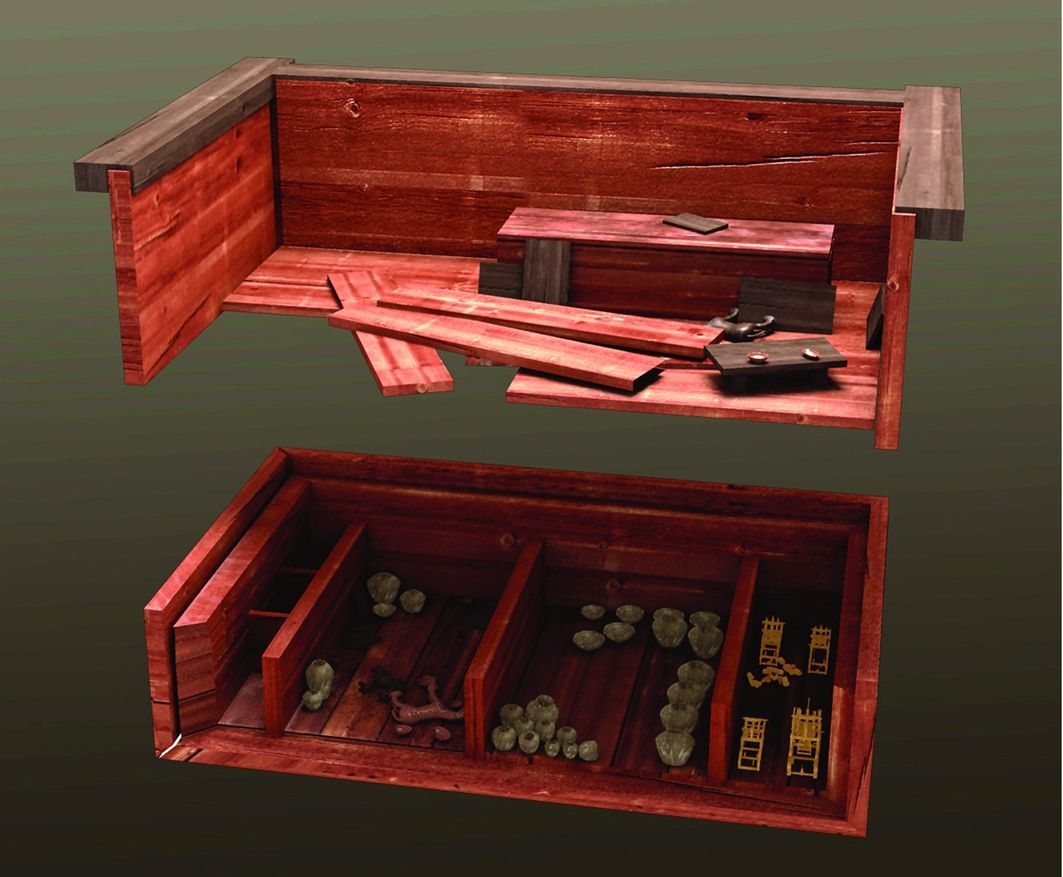Model Looms Are Missing Link in China’s Textile History
Four miniature pattern looms found in a burial in Chengdu show how the Han Dynasty produced cloth to trade on the Silk Road
/https://tf-cmsv2-smithsonianmag-media.s3.amazonaws.com/filer/da/7a/da7a35b0-ade7-402c-a9e1-0b699f4fff0d/loom.jpg)
When construction workers in the city of Chengdu in China's Sichuan province found a multi-chambered tomb while building a subway route in 2013, it’s unlikely they realized they were rewriting the history of textiles. But it turns out the tomb dating to the second century B.C. contained miniature looms which were the earliest direct evidence of pattern weaving in the world, reports Laura Geggel at LiveScience.
According to a paper about the discovery in the journal Antiquity, the tomb had five chambers and included the remains of a woman around the age of 50. A jade seal on her coffin indicates that here name was Wan Dinu. Four compartments below her burial chamber included chests that held lacquer objects, but one chamber contained four model looms, each about one-sixth normal size. The History Blog reports that archaeologists also found 15 carved figurines of men and women, weavers and their assistants, each about 10 inches high set up in a type of diorama around the looms, winding thread and using tools.
“We are very sure that the loom models from Chengdu are the earliest pattern looms around the world,” Feng Zhao, the director of the China National Silk Museum and lead author of the study, tells Geggel.

Geggel reports that researchers have found older looms in the past, including one dating back 8,000 years ago in China. The Egyptians and Greeks were also known to use looms 3,400 to 2,400 years ago. Pattern looms, however, like the ones discovered in Chengdu, are a much more complicated machine and allowed weavers to produce complex “programmed” patterns.
According to the study, the looms are a missing link between those earlier technologies and weaving machines known from several centuries later. It helps explain how Chinese weavers during the Han Dynasty were able to create the large quantities of Shu jin silk which was traded along the Silk Road throughout Eurasia and as far west as the Roman Empire.
Eventually, the pattern loom was replaced by the even more versatile draw loom, which could create intricate patterns and images of animals and people. “[The draw loom] was then introduced to the West — Persia, India and Europe — indicating that the Chinese silk pattern loom made a significant contribution to the subsequent development of world textile culture and weaving technology,” Zhao tells Geggel.
One of the model looms is now on display at China’s National Silk Museum.